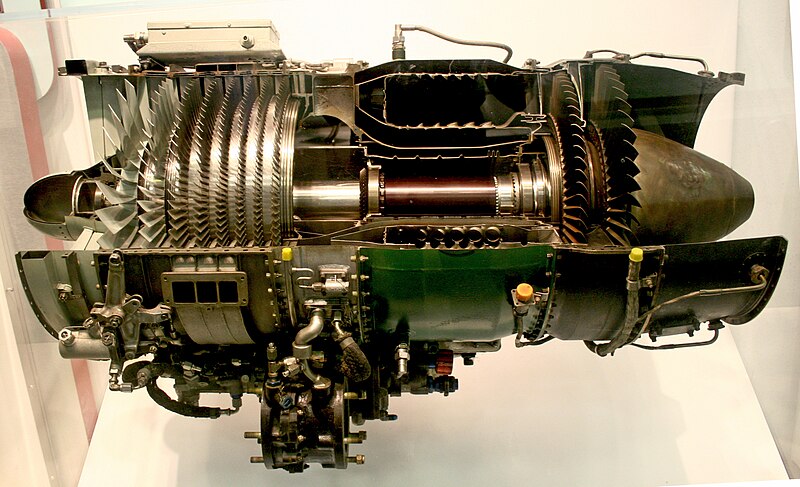A General Electric J85-GE-17A turbojet engine. This cutaway clearly shows the 8 stages of axial compressor at the front (left side of the picture), the combustion chambers in the middle, and the two stages of turbines at the rear of the engine.
A turbojet is a type of gas turbine engine that was originally developed for military fighters during World War II. A turbojet is the simplest of all aircraft gas turbines. It features a compressor to draw air in and compress it, a combustion section which adds fuel and ignites it, one or more turbines that extract power from the expanding exhaust gases to drive the compressor, and an exhaust nozzle which accelerates the exhaust out the back of the engine to create thrust. When turbojets were introduced, the top speed of fighter aircraft equipped with them was at least 100 miles per hour faster than competing piston-driven aircraft. The relative simplicity of turbojet designs lent themselves to wartime production, but the war ended before any turbojets could be mass-produced. In the years after the war, the drawbacks of the turbojet gradually became apparent. Below about Mach 2, turbojets are very fuel inefficient and create tremendous amounts of noise. The early designs also respond very slowly to power changes, a fact which killed many experienced pilots when they attempted the transition to jets. These drawbacks eventually led to the downfall of the pure turbojet, and only a handful of types are still in production. The last airliner that used turbojets was the Concorde, whose Mach 2 flight crossed the threshold into efficient turbojet operation.
Source : Wikipedia.

No comments:
Post a Comment